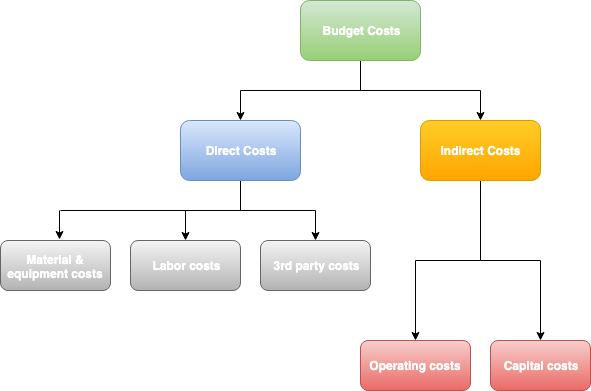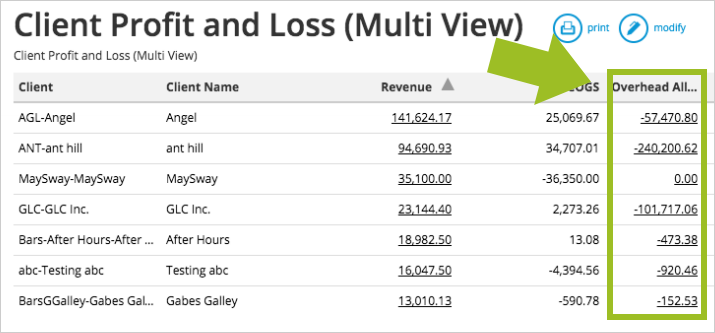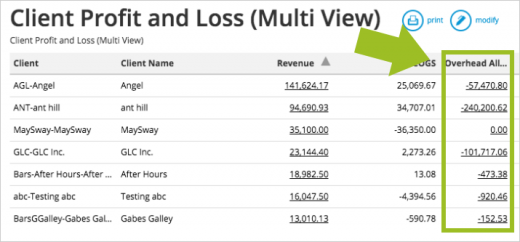How to Create a Project Budget: A Must-Read Guide for Agencies
— August 12, 2019
Mastering the art of creating a project budget is a crucial skill for any agency. Learn how to create a project budget in our new article.
So much of your success as an agency depends on getting the project budget right.
Underestimate it and you risk not having enough money to accomplish the project goal. Overestimate it and you risk losing the project altogether.
Creating the perfect project budget is partly a matter of experience, and partly a matter of process. You have to understand the basics of project making, but you also have to bring in the collective experience of your team.
In this guide, we’ll cover project budgets in detail. You’ll learn about the common approaches to creating a project budget, the elements that should be included in it, and how to make one.
Breaking Down the Project Budget
There are two scenarios when you would need to create a budget in an agency:
- You’re creating an estimated budget as part of a project proposal, i.e. a proposal budget
- You’re creating a spending plan as part of a client project, i.e. a project budget
Your goal in the two cases is very different.
In a proposal budget, you’re still trying to convince the prospect to choose you as their agency partner. The budget, in this case, becomes a persuasion tool. You have to share an estimate that excites your prospects without cutting into your margins.
The key word here is “estimate” because a proposal estimate is just that. You might or might not win the deal with the same budget as you estimated in the proposal.
In a project budget, however, you’ve already won the deal. Your job now is to get the money for it from the project sponsor.
This is essentially a negotiating exercise. You propose a budget to the sponsor based on your experience and agreed-upon pricing terms. The sponsor approves it or asks for clarifications and revisions.
In this exercise, your goal should be accuracy. Underestimating the budget can lead to asking the sponsors for extra cash. Overestimating might cause sponsors to review the terms of the deal itself (or worse, renege on it). Neither of these situations is ideal.
To get this accurate measure of the project budget, you have to know two crucial things:
- How the project has been priced, and
- What goes into the project budget
We’ll look at both of these issues in more detail below.
How Agencies Approach Project Budgets
The depth and accuracy of your project budget will depend a great deal on how the deal has been structured.
This, in turn, will depend on your agency pricing model, your experience with the client, your industry, the project-type, and a host of other factors.
For instance, if you’re working on a project with a fixed price, you have to be very accurate in your budget estimates. Else you risk going under or over budget.
On the other hand, if you follow hourly pricing, you can get away with a rough budget. After all, you’ll be billing clients based on the number of hours worked, not fixed costs.
Broadly speaking, agencies typically use the following four approaches to project budgets:
1. Time & Materials
The most common budgeting strategy, especially among creative agencies, is to charge clients based on:
- The total cost of materials used to create the deliverables
- The hourly cost of resources used, multiplied by the hours worked for each resource
There are variations on how the hourly cost is calculated – some agencies charge for each resource, others follow a “blended rate” model.
Regardless of the calculation method, the time & materials (T&M) budgeting approach is the simplest. In fact, you don’t even need to calculate an estimated budget – you just have to calculate the estimated time.
Project budgets in this approach are:
- Flexible and open-ended
- Time-based, not cost-based
2. Fixed-Price, Fixed-Scope
This budgeting approach is commonly used when responding to RFPs (Request for Proposals). Essentially, the client has a fixed requirement (“build a website with a checkout option”) and a fixed budget to accomplish it.
On paper, this budgeting approach should work well for everyone. The client wants X; you know how to deliver X. Based on your experience, you offer a quote for delivering it – a 20% profit margin included.
However, as experienced project managers will tell you, client requirements change over time. They want new features but are committed to the fixed price you calculated initially. Eventually, you eat into your profit margins to deliver the project and keep the client happy.
Inaccurate budgeting in such cases can be disastrous for an agency. Minus a healthy margin, you can even end up with a net loss.
Project budgets in such cases have to be:
- Fixed
- Highly accurate with detailed pricing for all involved resources
- Managed closely to avoid going over budget
3. Fixed-Price, Flexible-Scope
In some cases, clients have fixed budgets but flexible requirements. They’re okay with removing certain deliverable as long as the core purpose of the project is fulfilled.
This is an example of a fixed-price, flexible-scope project. While you still have to be accurate in your project estimates, you have far more freedom than in fixed-scope projects. If you find that a particular non-essential deliverable can’t be accommodated, you can remove it from the project scope.
Project budgets with this approach have to be:
- Fixed
- Loosely defined
- Accurate, but only in terms of core deliverables
Of course, there are other budgeting models as well based on your agency’s pricing strategy. If you follow value or performance-based pricing, for instance, your budget will depend a lot on the value delivered (and your ability to show this value).
But these are still niche cases. In most projects, you’ll have to work around fixed costs.
Types of Project Costs
A budget is essentially the sum of all the costs involved in creating the project’s key deliverables – personnel, materials, tools, administrative, etc.
To create a project budget, thus, you must understand all these costs.

Let’s look at them in more detail:
1. Direct and Indirect Costs
The most common method to classify project costs is to segregate them into direct and indirect expenses.
- Direct costs are the expenses required to produce the project deliverables. Salaries for people, cost of equipment, cost of materials, etc. fall into this category.
- Indirect costs are the expenses required to keep your agency and the project running smoothly. Office rent, electricity, administrative staff salaries, etc. fall into this category.
On most projects, direct costs form a bulk of the budget. Indirect costs, rarely, if ever, get factored into the project budget. However, calculating indirect costs is crucial for arriving at a profitable budget.
We’ll look at the impact of indirect costs in calculating project budgets in more detail below.
While direct costs are easy enough to understand, indirect costs throw up tons of questions. If you buy a computer to serve a client, is that included under direct or indirect costs? If you spend $ 1,000 training your designers, how would you classify that?
The answer to this problem is capital and operating costs.
2. Capital and Operating Costs
In running an agency, your expenses can be broadly classified into two categories:
- Capital costs, i.e. costs involved in creating assets for the agency. Buying a computer, for instance, is a capital cost since the computer represents an asset that can be sold later.
- Operating costs, i.e. costs involved in running your agency or a team. Office rent, electricity, administrative staff salaries, etc. fall into this category. These are expenses that don’t create assets.
While some capital and operating costs are easy to figure out (such as computers vs office rent), others are not always cut and dry. If you’re investing in a corporate training program to upskill your designers, are you creating an asset or are you simply improving your operating efficiency?
Another question to consider is how you account for assets bought for a particular project, but which are useful beyond the project as well. For instance, you might buy a 3D printer for a client project, but you’ll use it for future projects as well.
There are no right answers to such questions. You will have to factor in your agency policies and accounting practices. Consult your accountant before you add them to your project budget costs.
This brings us to the final part of this article: creating the actual project budget.
How to Create a Project Budget
We’ve seen that the project budget and how rigorously you calculate it depends on your agency pricing model and direct/indirect costs.
But how exactly do you go about creating this project budget?
I’ll share some insight below.
Go From Rough Estimates to Accurate Budgets
In our guide to project plans, we talked about the importance of moving from a broad charter to a highly specific plan.

The same broad -> narrow approach applies to project budgets as well. Put simply, you have too little information at the start of the project planning phase to really know the final costs involved.
Here are the three steps involved in this exercise:
1. Rough estimate
Start the budgeting process by creating a rough estimate. This is usually offered when you haven’t won the deal or are in the early stages of negotiation with a project sponsor. A rough estimate will usually have a wide range, such as $ 50,000-$ 100,000.
2. Budget estimate

The budget estimate comes after the client approves your rough estimate. This estimate is based on a rough project plan and should be accurate between +/- 10-15% of the final budget. It is usually delivered right after you map the project charter and project scope.
To create this budget estimate, map out a project plan based on the key deliverables. You don’t have to have exact work packages yet, but having a broad idea of what is to be created and the resources required to create them helps.
3. Final Budget
After the client approves the estimated budget, you’ll get down to the brass tacks of mapping out the project plan. By this stage, you would have a clear idea of work packages based on your work breakdown structure.
For each deliverable on your WBS, calculate the amount of work and materials required. Add all of these up to arrive at your final budget.
Don’t forget to factor in your indirect costs (more on this later) and operating margins.
The final budget is sometimes also called a Statement of Work (SoW) Budget.
Include Indirect Costs Into Your Pricing
The easiest way to crash a project is to budget it based only on your direct costs.
Running a project team requires a lot of resources and expertise. You can’t directly bill clients for these expenses (I’m yet to see an invoice with a line item of “office rent”), but you have to factor them into your budget.
The easiest way to include these costs is to distribute them across all your projects.
Let’s consider an example. A new project requires two full-time designers and one developer working at 20 hours/month. It also requires $ 1,000 in materials.
Your direct costs would be:
- 2 x designers @ $ 8,000/month = $ 16,000/month
- 1 x developer @$ 10,000/month, part-time = $ 5,000/month
- $ 1,000 in material costs every month
That is, $ 22,000/month. With a 20% profit margin, your total project budget would be $ 26,400.
However, you also pay $ 5,000/month in office rent and have three administrative staff at $ 5,000/month each. Your total cost of hosting the full-time designers, thus, is $ 20,000/month.
If you have 20 ongoing projects, this comes out to $ 1,000/month/project in indirect costs.
If you don’t factor these costs into your budget, you’re effectively eating $ 1,000 from your profit. In other words, your margin goes down from 20% to 15.45%.
Poor tracking of these indirect costs is one of the biggest reasons for agency profitability issues. A tool like Workamajig makes this easy for you by allocating indirect costs (i.e. overheads) across your projects automatically.

Structure and Track the Project Budget
Calculating the project budget is only one part of the budget creation exercise; you also have to structure and track it correctly.
Most agencies should have their internal templates for presenting the project budget. But if you don’t, you can create your own easily. Just make sure to include the following fields:
- Project identification: Include fields such as project name, ID, dates, sponsor, and project manager name – everything that you’d include in a status report.
- Categorize activities: For a broad project overview, categorize activities into different categories such as “Initiation”, “Research”, “Design”, etc. In a detailed budget, you can break things down further into deliverable-focused activities (“logo design”, “UI mockups”, etc.)
- Identify required resources: For each activity you identified above, list the resources required and their costs. For instance, if logo design requires 10 hours at $ 25/hour, you would have a line item of $ 250 under this category.
- Include material and third-party costs: Does the project require an outside contractor (say, a 3D printing shop)? Does it involve any material costs (such as stock photography)? Make sure to include them under separate category headers.
- Include taxes: Lastly, don’t forget to include any taxes involved in delivering the project.
The easiest way to create project budgets is to use creative project management software.
Business & Finance Articles on Business 2 Community
(74)


